89 Weird Facts That Will Leave You Scratching Your Head
1. The fingerprints of koalas are similar to humans.
Koalas have fingerprints that are almost indistinguishable from human fingerprints, and they share many of the same patterns and ridges. Because of this, there have been instances where koalas have been found at crime scenes, and their fingerprints have been mistaken for those of a human.
However, forensic scientists are now trained to recognize the unique characteristics of koala fingerprints to avoid these mistakes. This similarity is still unknown, but it may be due to the shared ancestry between humans and koalas.
2. Astronauts in space can grow up to two inches taller.
The human body is designed to function in Earth’s gravity, and the force of gravity naturally compresses our spines.
Did you know astronauts can grow up to two inches taller in space? Earth’s gravity naturally compresses our spines, but in space, this compression is reduced. That’s why astronauts’ spines elongate.
Once back on Earth, they return to their usual height. This spine stretch can even cause them some back pain while floating among the stars.
3. The Andes, Earth’s longest mountain range, houses the world’s driest Atacama desert.
The Andes mountain range runs along the western coast of South America, stretching over 4,300 miles from Venezuela to Chile. This range is also home to the Atacama Desert, which is known as the driest desert in the world.
The Atacama receives very little rainfall; in some areas, it may go years without rain. Despite these harsh conditions, the Atacama is home to various unique and hardy plant and animal species, including cacti, lizards, and flamingos.
4. A group of bananas is called a hand.

Here’s a weird fact about bananas: a bunch of bananas is made up of several smaller clusters of bananas called hands. Each hand can contain up to 20 bananas, and a single bunch can contain multiple hands.
The term hand comes from the fact that when a bunch of bananas is harvested, it is typically cut from the tree with the hands still attached rather than as individual bananas.
5. Honey never spoils. It can last thousands of years.
Honey is a unique substance that has a very long shelf life. Due to its high sugar content, low water content, and natural antibacterial properties, honey can last for thousands of years without spoiling.
Archaeologists have found jars of honey in ancient Egyptian tombs that are still edible after thousands of years. Honey can crystallize over time, changing its texture and making it less appealing to some people.
6. The largest recorded snowflake was 15 inches wide and 8 inches thick.
Snowflakes are beautiful and unique but usually don’t get very large. On rare occasions, snowflakes can grow quite large, with the world’s largest snowflake on record measuring 15 inches wide and 8 inches thick.
This massive snowflake fell during a snowstorm in Montana in 1887 and was recorded by a rancher who preserved it in a photograph. While it is unlikely that we will ever see a snowflake this large again.
7. The largest living organism on Earth is a fungus.
The world’s largest living organism is not an elephant or a whale, but rather a fungus called Armillaria ostoyae, which spans a whopping 2,200 acres of forest in Oregon. The fungus has been growing for over 2,400 years and weighs 6,000 tons.
The fungus spreads underground through a network of tiny threads called mycelium, which feed on the trees it grows on. While the fungus is usually harmless to trees, it can cause problems when it infects weakened trees, leading to their death.
8. A giraffe’s heart is approximately 2 feet long.
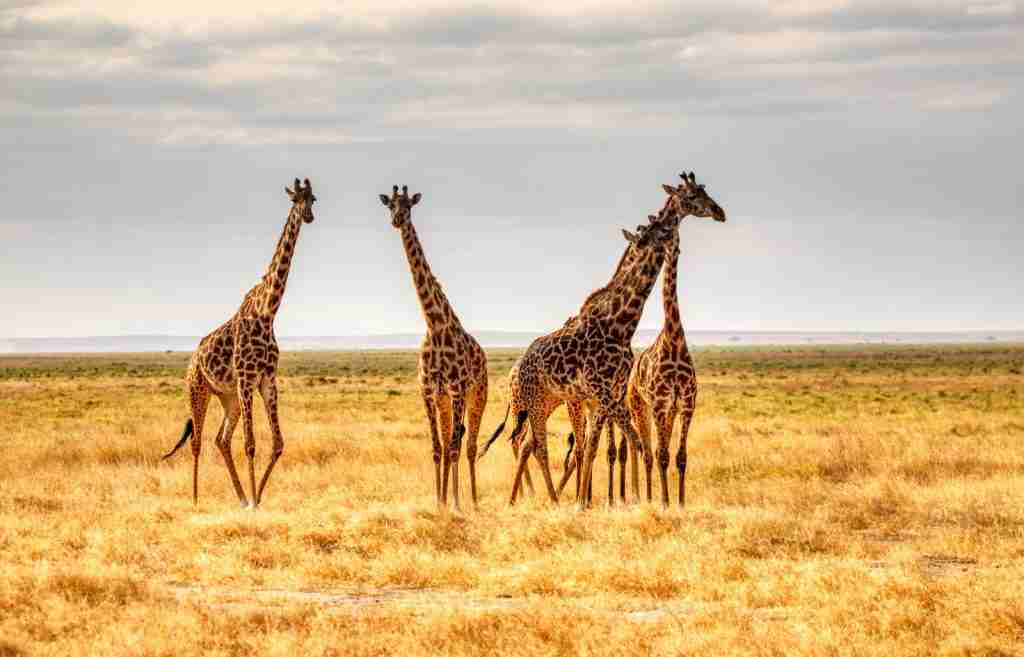
Discover the wonders of the animal kingdom: a giraffe’s heart is an astonishing 2 feet long, a feature essential for pumping blood throughout its tall frame.
This remarkable organ allows giraffes to maintain high blood pressure and effectively circulate blood to the brain.
9. Slugs have four noses.
Imagine having four noses to sniff out your surroundings. That’s the reality for slugs. Unlike humans with just one, slugs boast four tentacles on their heads that act as noses.
This means they have an exceptional ability to sense their environment, making their slow-paced world rich in scents and sensations.
10. The world’s deepest postbox is in Susami Bay, Japan.
Susami Bay, located in Wakayama Prefecture, Japan, is home to the world’s deepest postbox, submerged at a depth of 10 meters.
The postbox was installed in 1999 as part of a local tourism campaign, and visitors can now scuba dive to the postbox and mail special waterproof postcards.
The postbox is made of stainless steel and features a design of a fish swimming in the sea.
11. Dolphins sleep with one eye open and half their brain awake.
Dolphins have a unique way of resting. They sleep with one eye open, literally. While half of their brain catches some zzz’s, the other half stays alert.
This not only helps them keep an eye out for potential threats but also allows them to continue swimming and surfacing for air. Nature’s way of ensuring these marine wonders stay safe while they recharge.
12. The number 40 is the only number that is spelled with its letters arranged in alphabetical order.

The number 40 holds a special place in the English language. Why? When spelled out as forty, its letters fall in alphabetical order. It’s the only number with this unique trait.
So the next time you encounter the number 40, you’ll have an interesting tidbit to share.
13. Some frogs can freeze solid and thaw out with warmer weather.
Certain species of frogs have the ability to survive extremely cold temperatures by producing a type of antifreeze that prevents ice crystals from forming inside their bodies.
This allows them to freeze solid, their hearts and breathing stop, and their skin becomes almost completely dehydrated.
When the weather warms up, the ice in their bodies melts, and the frogs can rehydrate and resume their normal bodily functions.
14. A group of flamingos is called a flamboyance.
Did you know that the pink color of flamingos comes from the pigments in the algae and small crustaceans they eat? It’s one of the weird facts about these fascinating birds. The more they consume these pigments, the brighter and more vibrant their feathers become.
This is why flamingos in captivity are often given special diets that include these pigments to help maintain their iconic pink hue.
15. A chameleon’s tongue is longer than its body.
Chameleons have a fascinating feature on their tongue. It’s not just long; it’s incredibly stretchy, often extending more than their entire body. This super-long tongue isn’t just for show; it’s a hunting tool.
With a lightning-fast snap, they can capture prey from a distance, turning mealtime into a spectacular display of accuracy and speed. Talk about a stretchy snack attack.
16. The oldest living animal on Earth is a 507-year-old clam.
The ocean quahog clam, the Arctica islandica, is the longest-living animal known to science. In 2006, a specimen estimated to be at least 507 years old was discovered off the coast of Iceland.
The clam’s longevity is attributed to its slow growth rate and low metabolic rate, which allows it to conserve energy and avoid predation.
17. The Great Wall of China is not visible from space.
Contrary to popular belief, the Great Wall of China is not visible from space with the naked eye. While the wall is an impressive feat of engineering and stretches over 13,000 miles, it is not visible from low Earth orbit without magnification.
The myth of the wall’s visibility from space likely originated from a misinterpretation of a statement made by a U.S. astronaut in the 1960s.
18. -40 degrees Celsius is equal to -40 degrees Fahrenheit.
Here’s something interesting: -40 degrees is the magical point where the Celsius and Fahrenheit scales intersect. That means -40°C and -40°F are the same temperature.
It’s a rare moment where both systems align. So, no matter what scale you’re using, at -40, it’s extremely cold.
19. The Eiffel Tower can grow in summer.
The Eiffel Tower in Paris, France, is an iconic landmark completed in 1889.
As a weird fact, it can grow in height during the summer months due to the heat causing the metal structure to expand, making it taller by up to 6 inches.
As the temperature cools, the tower contracts back to its original height, returning to its usual size.
20. The largest animal ever to exist on Earth is the blue whale.
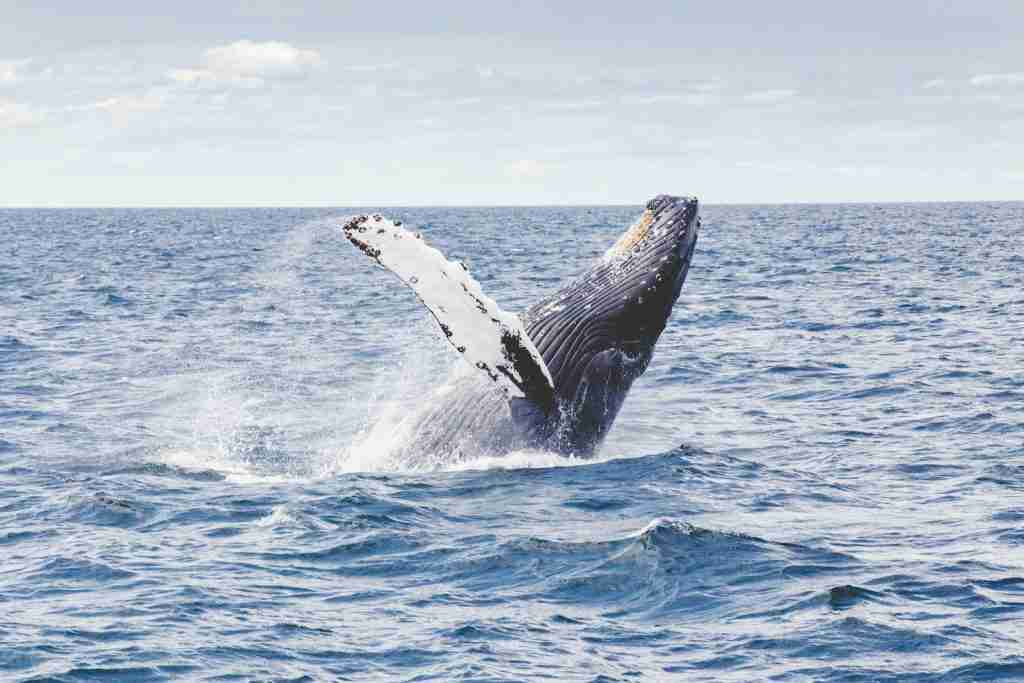
Blue whales, the largest animals on Earth, primarily eat tiny krill despite their massive size. Surprisingly, their throats are only basketball-sized.
They communicate over hundreds of miles using low-frequency sounds and have an astonishing lung capacity of up to 1,000 gallons per breath.
21. It is possible to lead a cow upstairs but not downstairs.
Weirdly enough, cows have a unique anatomy that allows them to walk upstairs without any problem. Leading them downstairs can be challenging as their knees don’t bend properly, leading to loss of balance and injuries.
This is a fascinating fact about cows that many people may not know. This is why it is recommended to never try to lead a cow downstairs.
22. The driest place on Earth is the Atacama Desert in Chile.
The Atacama Desert in Chile is known for being the driest place on Earth, with some areas receiving less than 1 millimeter of rain per year. Some areas of the desert have never received a drop of rain in recorded history.
The extreme aridity of the Atacama makes it an ideal location for astronomical observations and has even been compared to the surface of Mars.
23. Carrots used to be purple until the 17th century.
It’s a weird fact that carrots weren’t always orange. They came in various colors, such as purple, white, and yellow.
But in the 17th century, Dutch growers honored William of Orange by cultivating orange carrots, which eventually became the most common variety we see today. You can still find the unique purple and white varieties in some specialty markets.
24. In the United States, there is a town called Chicken, Alaska.

Chicken is a small town in east-central Alaska, with just over 20 people. The town was founded in the late 1800s during the Klondike Gold Rush and got its name after the town’s original inhabitants couldn’t agree on how to spell the word ptarmigan, a type of bird that is common in the area.
25. A cat has 32 muscles in each ear.
Cats boast extraordinary hearing thanks to 32 ear muscles that allow 180-degree rotation and independent movement. This enables them to pinpoint faint sounds and hear in two directions simultaneously.
Their hearing range extends two octaves higher than humans, allowing them to detect ultrasonic noises.
26. Humans and giraffes have the same number of neck vertebrae.
Here’s a fun fact that might boggle your mind: Despite their long necks, giraffes have the same number of neck vertebrae as humans – just seven.
While ours are small and compact, a giraffe’s vertebrae can be up to 10 inches long. So, the next time you gaze up at a towering giraffe, remember that our necks share a quirky similarity, even if they look vastly different.
27. The world’s largest spider is the Goliath birdeater.
The Goliath birdeater spider, native to South America, is considered the largest spider in the world in terms of mass, weighing up to 6 ounces. Its leg span can only reach up to 11 inches, making it smaller than some other species in terms of overall size.
Despite its name, the Goliath birdeater primarily feeds on insects but has occasionally consumed small birds.
28. You are probably in the background of hundreds of people’s photos without even knowing it.

Imagine you’re walking through a busy tourist spot. Chances are, you’ve photobombed someone without even realizing it. In today’s world, where everyone’s snapping pictures, you could easily be in the background of hundreds of photos.
It’s like you’re an unintentional extra in a scene, starring in people’s vacation memories across the globe.
29. The immortal jellyfish can age backward to its juvenile state.
The immortal jellyfish, also known as Turritopsis dohrnii, is a unique species of jellyfish that has the ability to age backward. When the immortal jellyfish reaches the end of its natural lifespan, it can revert to its juvenile state, essentially starting its life cycle over again.
This ability, known as transdifferentiation, allows the immortal jellyfish to potentially live forever as long as it is not killed by disease or predators. The species is found in warm oceans around the world.
30. The fastest bird in the world is the peregrine falcon.
The peregrine falcon is a remarkable bird of prey known for its incredible speed and agility. When diving for prey, the peregrine falcon can reach speeds of over 186 mph, making it the fastest bird in the world.
The peregrine falcon is found on every continent except Antarctica, and it is known for its distinctive black mustache markings on its face.
31. The largest diamond ever found was over 3,100 carats.
The Cullinan diamond is the largest gem-quality diamond ever discovered. It was found in the Premier Mine in South Africa in 1905 and weighed a staggering 3,106 carats. The diamond was named after the mine owner, Sir Thomas Cullinan.
The stone was eventually cut into nine major pieces, with the two largest pieces becoming part of the British Crown Jewels. The Cullinan is considered to be one of the most famous diamonds in the world and remains an object of fascination to this day.
32. Elephants are the only animals that can’t jump.
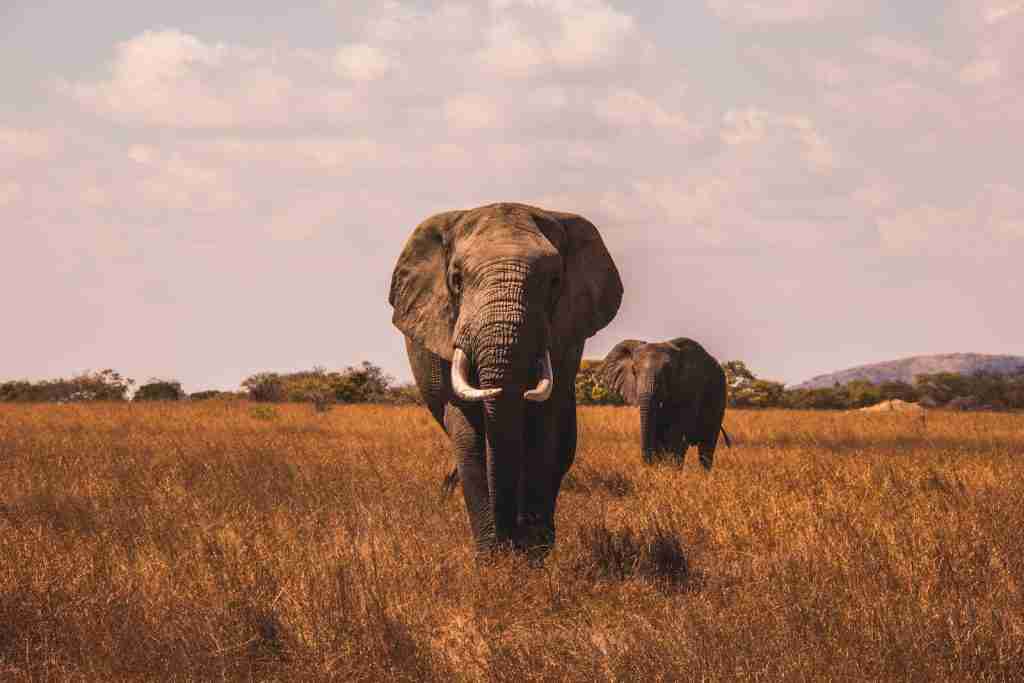
Elephants are known for their strength and size but have a unique physical limitation: they cannot jump. This is due to their massive bodies and the structure of their legs.
Elephants are also unable to gallop like other large animals, but they can walk and run up to speeds of around 25 miles per hour. Despite their inability to jump, elephants are still incredibly agile and can navigate various environments.
33. The world’s largest potato was grown in England in 2011.
In 2011, a farmer in England named Peter Glazebrook set a new world record for the largest potato ever grown. The potato weighed in at a whopping 11 pounds 4 ounces, more than twice the size of an average potato.
Glazebrook is known for his expertise in growing giant vegetables and has set records for the largest onions, carrots, and parsnips.
34. In 2012, Italy made the world’s largest pizza, over 131 feet in diameter.
Pizza is a dish loved by people all over the world. But in 2012, a team of chefs in Italy took things to a whole new level by creating the world’s largest pizza. The pizza was made in Rome and measured over 131 feet in diameter, breaking the previous record for the largest pizza by more than 20 feet.
It took a team of 100 chefs to make the pizza, which weighed in at over 50,000 pounds. The pizza was made with over 19,000 pounds of flour, 10,000 pounds of tomato sauce, and 8,800 pounds of mozzarella cheese.
35. The world’s largest pumpkin weighed over 2,600 pounds.
In 2016, a Belgian man named Mathias Willemijns set a new world record for the largest pumpkin ever grown. His pumpkin weighed an incredible 2,624.6 pounds, breaking the previous record by over 200 pounds.
Growing giant pumpkins requires careful cultivation techniques, including soil preparation, fertilization, and pruning.
36. A group of owls is called a parliament.
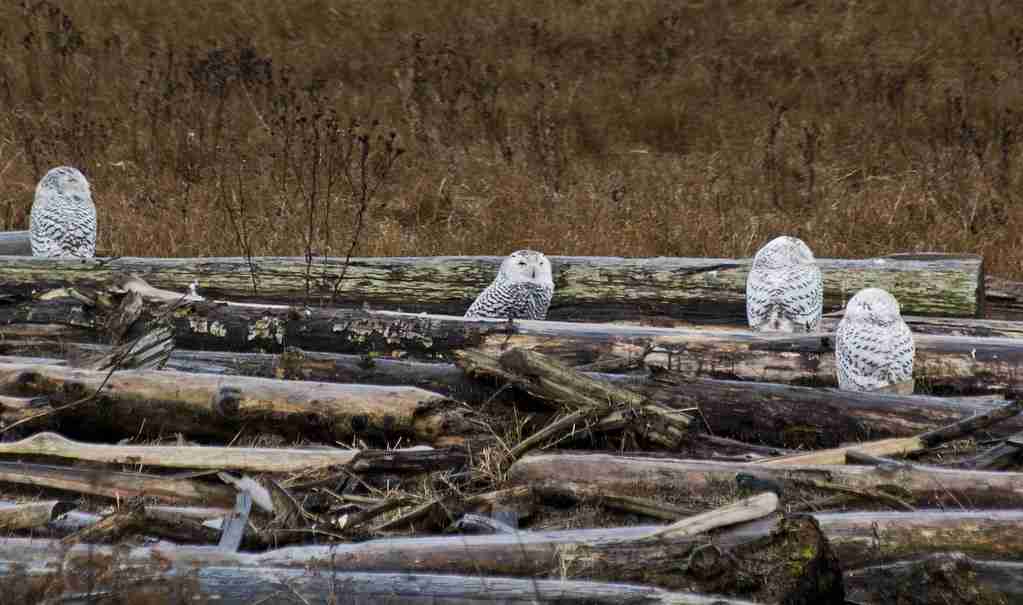
Owls are fascinating birds that have long been associated with wisdom and knowledge. A group of owls is known as a parliament, a nod to their reputation for being wise and learned creatures.
Owls are also known for their distinctive calls, which can be heard echoing through the night. There are over 200 species of owls worldwide, each with unique characteristics and behaviors.
37. The longest place name in the world is Taumatawhakatangihangakoauauotamateaturipukakapikimaungahoronukupokaiwhenuakitanatahu.
Taumatawhakatangihangakoauauotamateaturipukakapikimaungahoronukupokaiwhenuakitanatahu, also known as Taumata, is the longest place name in the world.
It is a Maori word that translates to the summit where Tamatea, the man with the big knees, the slider, climber of mountains, the land-swallower who traveled about, played his nose flute to his loved one.
The name refers to a hill in Hawke’s Bay on the North Island of New Zealand. While the name may seem daunting, it is rarely used in everyday conversation, and most people simply refer to it as Taumata.
38. There is a town in Pennsylvania called Intercourse.
Intercourse is a town located in Lancaster County, Pennsylvania, USA. The town was established in 1754 and was named after the crossroads of two major roads at the time, known as Cross Keys and Goodville.
While the name “Intercourse” may have a suggestive connotation in modern times, it refers to the exchange or interaction of people, goods, or ideas.
39. An average person spends approximately 25 years of their life sleeping.
Think about it: 25 years asleep. That’s a quarter of an average lifetime spent in slumber. While it might sound like a lot, sleep is crucial for health and well-being.
During these sleeping years, your body heals, and your brain sorts out memories. So, while it may seem like downtime, it’s a busy period of essential bodily maintenance.
40. Venezuela’s Angel Falls is so tall that its water turns to mist before reaching the bottom.
Angel Falls in Venezuela stands as the world’s tallest uninterrupted waterfall, with a height so immense that the cascading water often turns into mist before it reaches the ground.
This natural phenomenon adds an ethereal quality to the falls, making it a breathtaking sight for visitors. Accessible only by plane or boat, the waterfall is a popular tourist destination and a revered site for the indigenous Pemon people.
The best time to visit is during the rainy season when the water flow is at its peak.
41. Swans mate for life and can die of heartbreak if their partner passes.
Swans are large aquatic birds in ponds, lakes, and rivers worldwide. They are known for their graceful movements and long, elegant necks. One interesting fact about swans is that they mate for life and often stay with their partners for many years.
If one swan dies, the other may become inconsolable and even die of a broken heart.
42. Olympus Mons on Mars is the solar system’s highest mountain.
Olympus Mons is a shield volcano located on the planet Mars. It is the highest mountain in our solar system, with a height of over 13 miles and a diameter of nearly 370 miles.
It is also one of the largest volcanoes in our solar system and is three times larger than Mount Everest, the tallest mountain on Earth.
Olympus Mons is considered geologically inactive despite its size, with no signs of recent eruptions. Scientists believe the volcano formed billions of years ago and has remained dormant.
43. Pigs are intelligent animals, often outperforming dogs on certain tasks.
You might not expect it, but pigs are brainy creatures. They’re not just smart in some cases; they even outshine dogs in intelligence tests. From navigating mazes to manipulating objects, pigs have showcased their cleverness repeatedly.
So, the next time you hear smart as a pig, know it’s truly a compliment to their remarkable brainpower.
44. The original name for Bank of America was “Bank of Italy.”

That’s right. Before becoming the massive entity known as Bank of America, it started out as Bank of Italy. Founded in San Francisco by Amadeo Pietro Giannini in 1904, it was initially aimed at catering to immigrants settling in the U.S. Funny to think, right?
A bank that sounds straight from Rome became one of America’s banking giants.
45. The world’s largest bat is the giant golden-crowned flying fox.
The giant golden-crowned flying fox is a species of bat found in the Philippines. With a wingspan of up to 5 feet, it is the largest bat in the world. Despite its intimidating size, the flying fox is a harmless fruit-eater and plays an important role in pollination and seed dispersal.
46. The highest recorded Earth temperature was 134°F.
Death Valley, located in California, USA, is known for its extreme temperatures. On July 10, 1913, the temperature in Death Valley reached a scorching 134 degrees Fahrenheit, the highest temperature ever recorded on Earth.
While the area is inhospitable to humans, it is home to various unique plant and animal species that have adapted to survive in the harsh desert environment.
47. Some cats are allergic to humans.
It’s a twist in the usual narrative of humans being allergic to cats. While it’s uncommon, some cats can show allergic reactions to humans. However, it’s not specific breeds of cats that are allergic.
Instead, it’s typically individual cats that might react to human dander or the products we use, like soaps or perfumes. Just like people, our feline friends can have their unique sensitivities.
48. A group of crows is known as a murder.
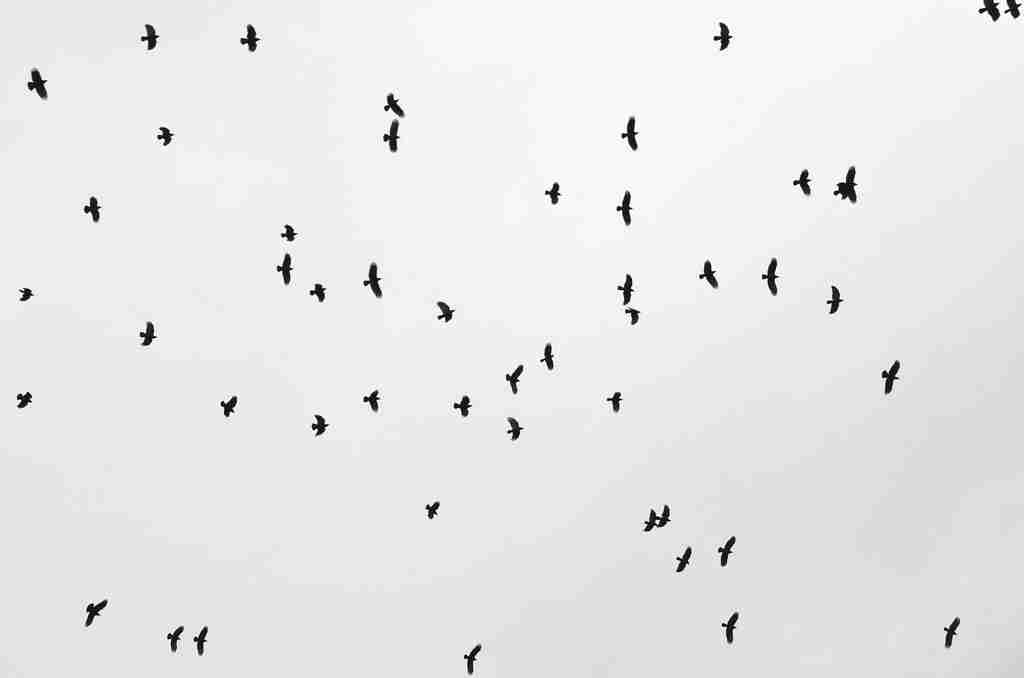
Isn’t language fascinating? When you spot a group of crows, you’re looking at a murder of crows. No, they aren’t up to any mischief. It’s just the unique and somewhat mysterious term used to describe a group of these black birds.
It adds a touch of drama to their already enigmatic presence, doesn’t it? So, next time you see them gathering, remember the intriguing name.
49. In Alabama, wearing a fake mustache in church is illegal if it induces laughter.
Alabama has a quirky law dating back to the 1800s that makes it illegal to wear a fake mustache in church if it causes laughter. This is just one of many bizarre laws in the U.S. that reflect historical societal norms.
For instance, Georgia prohibits tying a giraffe to a street lamp, Ohio outlaws getting a fish drunk, and in Connecticut, walking on your hands across the street is illegal.
These odd laws offer an intriguing window into America’s legal and cultural history.
50. A shrimp’s heart is located in its head.
Shrimp have a quirky anatomy tidbit: their heart isn’t in their chest; it’s in their head. These tiny crustaceans have a heart located just behind their eyes.
It’s a peculiar design, reminding us of the endless wonders and oddities nature has to offer. Makes you wonder what heart-headed decisions a shrimp might make.
51. A dentist invented the electric chair.
Here’s a surprising twist from the dental world. The electric chair, a device associated with capital punishment, was invented by a dentist named Dr. Alfred P. Southwick.
While his day job was tending to teeth, Southwick’s invention changed the course of criminal justice. It’s a stark reminder that inventions can come from the most unexpected professions.
52. The smallest bird in the world is the bee hummingbird.
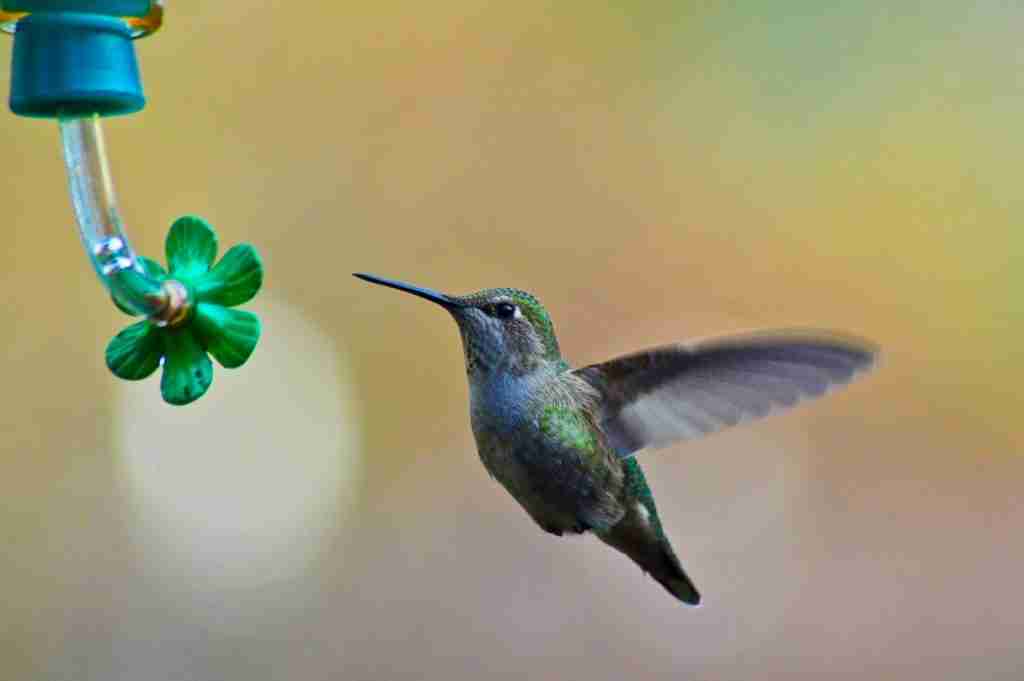
The bee hummingbird, also known as the “Zunzuncito,” is the smallest bird in the world, measuring only 2.25 inches in length and weighing about 2.6 grams. It is native to Cuba and is named after the sound it makes while flying, which resembles the buzzing of a bee.
The male bee hummingbird has a vibrant iridescent plumage, while the female has a duller green and white coloring. These tiny birds have a high metabolic rate and can consume up to 150% of their body weight in nectar daily.
53. The Great Barrier Reef is the world’s largest living structure.
The Great Barrier Reef, located off the coast of Australia, is the world’s largest coral reef system and is home to an abundance of marine life. It comprises over 3,000 individual reefs and 900 islands, stretching over 2,000 km.
The Great Barrier Reef is not only a popular tourist destination but also plays a vital role in the ecosystem, supporting numerous species of fish, sharks, sea turtles, and dolphins.
54. The Earth’s highest point isn’t Mount Everest but Hawaii’s Mauna Kea.
While Mount Everest’s peak reaches 29,029 feet (8,848 meters) above sea level, Mauna Kea rises only 13,803 feet (4,207 meters) above sea level, but its base extends far below sea level, making its total height from base to summit nearly 33,500 feet (10,210 meters).
55. Foreign accent syndrome can change a person’s accent after brain injuries.
Foreign Accent Syndrome is a rare condition often triggered by a stroke or brain injury, causing an individual’s accent to change dramatically. In some instances, people sound as if they’re from a region they’ve never visited.
The syndrome is believed to result from damage to brain areas controlling speech, affecting vocal cords and mouth muscles, and altering pronunciation.
56. Redheads typically require 20% more anesthesia than people with different hair colors.

If you’re a redhead, medical procedures could be a bit different for you. Research shows that redheads need about 20% more anesthesia than people with other hair colors.
Scientists think it’s linked to the MC1R gene, giving redheads unique hair color. So, next time you’re at the doctor’s office, this is a fun but crucial fact to remember.
57. A day on Venus is longer than its year due to its slow rotation.
Venus sure has a quirky way of measuring time. Believe it or not, a single day on Venus (its rotation) lasts longer than its entire year (its orbit around the sun).
This is because Venus spins on its axis very slowly, taking about 243 Earth days to complete one rotation. Yet, it only takes Venus about 225 Earth days to orbit the sun. Imagine celebrating a new year before a day even ends.
58. Green pea syndrome causes a person’s fluids to turn green after eating peas.
Green Pea Syndrome is a rare genetic condition causing a greenish hue in sweat, urine, and other bodily fluids after consuming peas. Caused by a genetic mutation that disrupts amino acid metabolism, the syndrome is harmless but can be embarrassing for those affected.
Though uncommon, some individuals may avoid peas and similar foods to prevent the unusual discoloration.
59. A cockroach can survive up to a week without its head.
Cockroaches exhibit a startling ability to live up to a week without their heads. This is possible because their brain is not centralized, and they breathe through tiny tubes in their body segments.
During this headless state, they can still perform basic functions and react to their environment. This extreme survival trait highlights the cockroach’s resilience and adaptability, enabling it to thrive across diverse environments.
60. Lemons can be used to power small electronic devices.

Lemons have the ability to generate a small electrical current due to their acidic properties. This phenomenon is known as the lemon battery, and it can be harnessed to power small electronic devices like watches and calculators.
To create a lemon battery, a lemon is cut in half, and a metal, such as a copper penny, is inserted into one half of the lemon, while a zinc-coated nail is inserted into the other half.
The metals act as electrodes, and the lemon juice acts as an electrolyte, allowing electrons to flow between the electrodes and generating a small electric current.
61. The words bookkeeper and bookkeeping are the only unhyphenated English words.
Isn’t the English language full of surprises? Bookkeeper and its derivative bookkeeping hold a unique distinction. They’re the only unhyphenated words in English that boast three sets of back-to-back letters: ‘oo,’ ‘kk,’ and ‘ee.’ It’s like a linguistic hat trick.
So, remember this standout example next time you’re thinking of words with repeated letters. Quite the spelling spectacle, right?
62. In some cultures, coconuts are used as a currency.
In certain cultures worldwide, coconuts have been used as a currency for centuries. This practice originated in areas where coconuts were abundant and served as an important source of food, water, and building materials.
In some parts of the Pacific Islands, for example, coconuts were traditionally used as a form of currency, with each coconut having a certain value depending on its size, quality, and ripeness.
Coconuts were often used to pay taxes, buy goods, settle disputes, and sometimes even purchase land or pay for weddings.
63. Cinnamon is the inner bark of a tree.
Cinnamon is a spice derived from the inner bark of trees belonging to the genus Cinnamomum. The bark is harvested by stripping it off the trees, then dried and rolled into sticks or ground into a fine powder. Cinnamon has been used for thousands of years as a flavoring agent in food and beverages and for its medicinal properties.
In traditional medicine, cinnamon has been used to treat various ailments, including digestive issues, respiratory problems, and menstrual cramps.
64. The cotton candy grape tastes just like cotton candy.

The “cotton candy grape” is a unique variety of grape that has gained popularity recently due to its sweet, cotton candy-like flavor. This type of grape is the result of crossbreeding different grape varieties by a horticulturist in California to create a new and interesting flavor profile.
The cotton candy grape has a distinctive taste that sets it apart from other types of grapes.
65. The sentence “The quick brown fox jumps over a lazy dog” uses every letter of the alphabet.
Ever tried typing “The quick brown fox jumps over a lazy dog” in a typing master program or written it down to improve your handwriting? This sentence is more than just a random phrase. It’s a pangram, uniquely using every letter of the English alphabet.
A fun tool for typists and handwriting enthusiasts alike, it’s a testament to the quirky corners of the English language.
66. Skechers’ first product was a roller skate sneaker called Chrome Dome in the ’90s.
Skechers, the popular footwear brand, started in the early 1990s with a unique product that combined two popular trends: roller skating and skateboarding. This innovative shoe, the “Chrome Dome,” was a hybrid sneaker and roller skate marketed to skateboarders.
The Chrome Dome featured a flat sole and a built-in roller skate that could be attached or detached from the shoe. The shoe was designed to allow skateboarders to switch quickly between skating and walking without changing their shoes.
67. The longest hiccuping spree lasted 68 years.
Can you imagine hiccuping for days? How about years? Well, there was a man who hiccuped for a staggering 68 years. Charles Osborne started hiccuping in 1922 and didn’t stop until 1990.
That’s over six decades of hiccuping. It’s a record no one probably wants to beat. Whenever you have hiccups, just be grateful it’s not for a lifetime.
68. Guccio Gucci founded Gucci after working as a bellboy at London’s Savoy Hotel.
Gucci is a luxury fashion brand that is recognized all over the world for its exquisite designs and high-quality products. The company was founded by Guccio Gucci, an Italian businessman who started in the fashion industry as a bellboy at the Savoy Hotel in London.
While working at the hotel, Gucci was impressed by the stylish luggage that wealthy guests brought. He was inspired to create his own line of high-end luggage and leather goods that would be just as stylish and well-made.
69. Ostriches can run faster than horses, and the males can roar like lions.
Ostriches are remarkable runners. They can dash faster than horses, reaching up to 43 miles per hour (69 km/h). It’s not just their speed that’s surprising; male ostriches have another trick up their sleeve.
They can produce deep, lion-like roars, often catching many by surprise. It’s a blend of athleticism and vocal prowess in the bird world.
70. Super Bowl ads in 2021 sold for $5.6 million for 30 seconds.
The Super Bowl is one of the most-watched sporting events in the world, with an estimated 100 million viewers tuning in each year.
As a result, advertising costs are incredibly high, with a 30-second spot during the 2021 game reportedly selling for as much as $5.6 million.
71. The shortest world title fight in boxing history lasted 10.5 seconds.
The sport of boxing has a rich and storied history, filled with memorable moments and legendary fighters. One of the most remarkable events in the sport’s history occurred in 1946 when American boxer Al Hostak took on Johnny Flores of Argentina for the world light heavyweight title.
The fight was over almost as soon as it began, with Hostak scoring a knockout victory in just 10.5 seconds. This remains the shortest world title fight in boxing history, and it is unlikely that any fighter will ever be able to match this record.
72. In 2010, Isner and Mahut played tennis’s longest match at Wimbledon.

The 2010 Wimbledon match between John Isner and Nicolas Mahut stands as the longest tennis match in history, lasting an astounding 11 hours and 5 minutes over three days.
Starting on June 22, 2010, the contest evolved into a marathon showdown, with both players demonstrating remarkable skill and endurance.
Each set was fiercely contested, setting a new benchmark for stamina and tenacity in tennis.
73. The longest golf hole is the 7th hole at the Satsuki golf course in Japan.
The hole is a par 7 and is so long that it’s not uncommon for players to require a caddy to help them navigate the golf course. In addition to its length, the 7th hole at Satsuki is also known for its beautiful views of Mount Fuji, which can be seen far from the tee box.
Despite its length, Japanese golfer Shigeki Maruyama only played the hole at par once in 2003.
74. The island nation of Fiji has a unique tradition known as Fiji time.
Instead of adhering to strict schedules and punctuality, Fijians tend to be more relaxed about time and may arrive late to events or appointments without offending.
It’s not uncommon for Fijians to show up hours after the agreed-upon time, and the phrase “Fiji time” is often used to describe this laid-back approach to scheduling.
While this can be frustrating for visitors who are used to more punctual cultures, it’s a reminder that not all parts of the world operate on the same time-based systems.
75. In countries like Finland and Sweden, Easter involves dressing as witches.
While Easter is celebrated worldwide, different cultures have unique traditions for marking the occasion. In some European countries, such as Finland and Sweden, one of these traditions involves dressing up as witches.
This tradition is particularly popular among children, who will paint their faces and dress in colorful clothes, often with a broomstick.
76. Cows have best friends and can become stressed when separated from them.
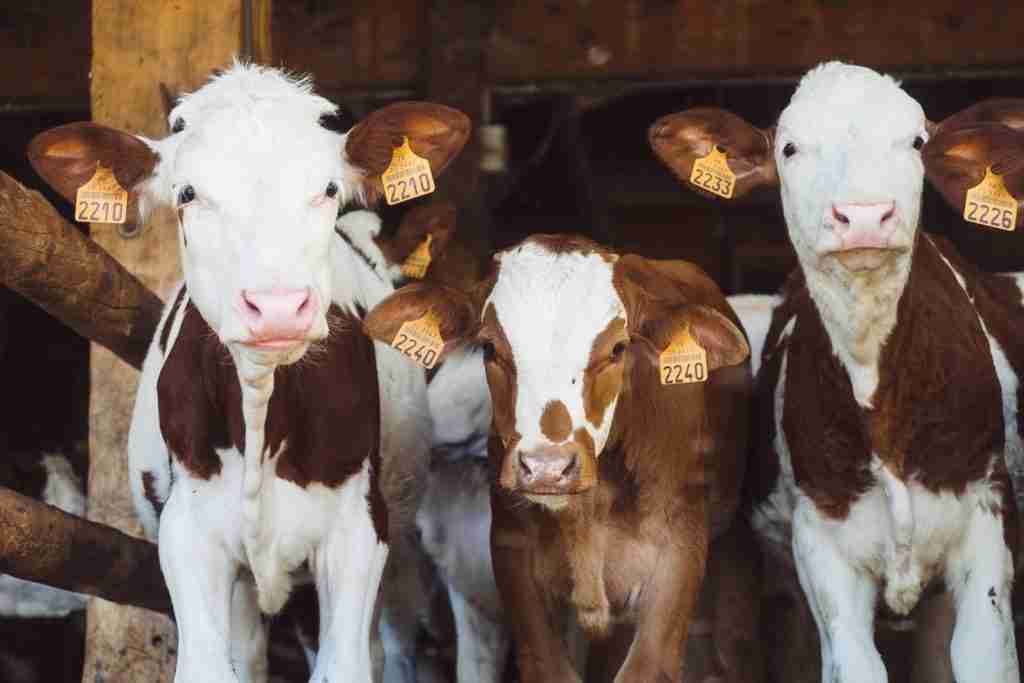
Cows are social animals that form strong bonds, often designating a specific individual as their best friend. Studies have shown that cows experience stress when separated from these close companions.
The emotional attachment between cow best friends is so strong that their heart rates and cortisol levels increase when apart. This intriguing aspect of cow behavior sheds light on the emotional complexity of these often-underestimated creatures.
77. In Iceland, there’s a Christmas tradition known as the Yule Cat.
According to legend, the Yule Cat is a giant feline who roams the countryside on Christmas Eve, looking for people who haven’t received any new clothes to wear before the holiday. If the Yule Cat finds someone wearing old clothes, it’s said to eat them alive as punishment.
While the tradition may seem strange, it’s thought to have originated as a way to encourage people to work hard and finish their chores before the holiday so they could receive new clothes as a reward.
78. In the realm of weird facts, llamas have three stomach compartments.
Llamas, part of the camel family, are adapted to arid environments with limited food resources. Their unique digestive system consists of three forestomachs—rumen, abomasum, and omasum—that efficiently break down food and extract nutrients.
After this, the food moves to the true stomach, or abomasum, for further digestion. This intricate system allows llamas to maximize nutrient absorption from sparse diets.
79. Peafowl (male peacocks) have iridescent feathers.
Male peafowl are known for their extravagant feather displays, which they use to attract mates. Their feathers are iridescent, meaning they can reflect different colors depending on the angle of the light.
This is due to the structure of the feathers, which have tiny, microscopic structures that scatter and reflect light in different ways. These structures are called photonic crystals, giving peacock feathers their unique shimmering appearance.
80. Rainbow trout can detect polarized light.
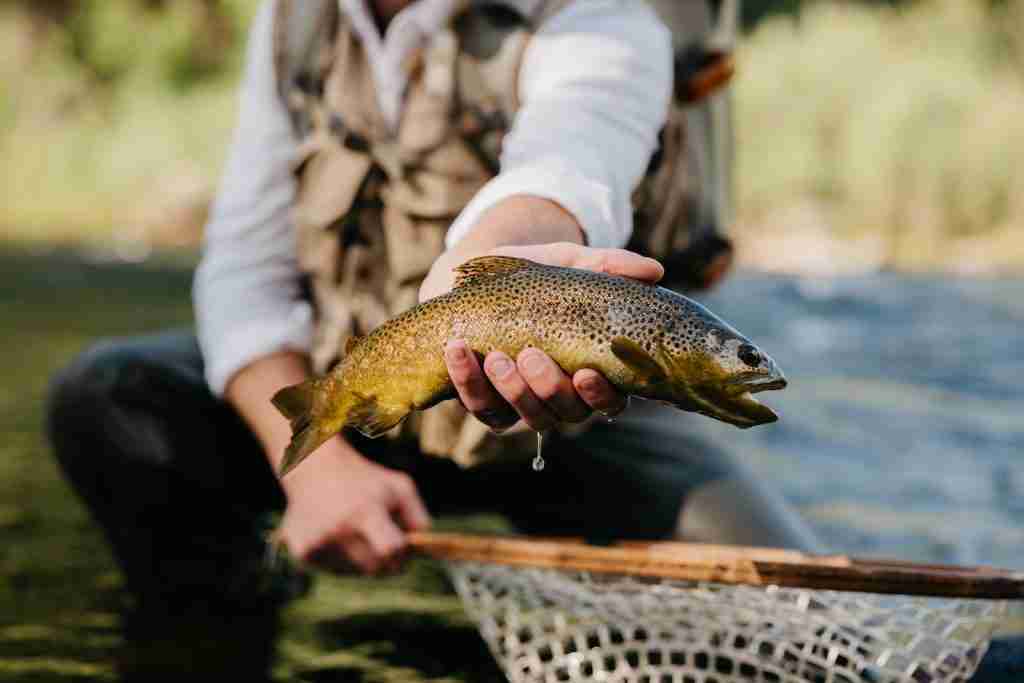
Rainbow trout are a species of salmonid fish found in freshwater streams and rivers. They have a unique ability to detect polarized light, which is light that vibrates in a single plane. This helps them navigate underwater environments, where polarized light can be used to identify the sun’s direction and locate food sources.
Rainbow trout can also use their polarized light detection to see through the water’s surface and spot potential predators.
81. Armadillos are the only mammals that have bony armor.
Armadillos are small, burrowing mammals found in Central and South America. They are unique in that they have a bony armor that covers most of their body. This armor is made up of small, overlapping plates that are connected by flexible bands of tissue.
The armor protects armadillos from predators and helps them dig burrows and search for food. Armadillos are not invincible despite their armor and are sometimes hunted by larger predators like jaguars and cougars.
82. Toucans have long, colorful bills much larger than their heads.
Toucans, vibrant birds native to Central and South America, are renowned for oversized, colorful bills. Despite their large size, these bills are surprisingly light due to a honeycomb-like structure filled with air pockets.
This unique construction provides strength and maneuverability, enabling toucans to access hard-to-reach food sources like fruit.
83. The Sun contains 99.86% of the total mass in the solar system.
The Sun is the star at the center of the solar system and is responsible for providing heat and light to all the planets orbiting around it. One of the weirdest facts about the Sun is that it contains 99.86% of the total mass in the solar system.
This means that all the planets, asteroids, and other objects in the solar system combined make up less than 0.14% of the total mass.
84. Black holes can warp space and time around them.

Black holes are some of the most mysterious objects in the universe and are formed when a massive star collapses in on itself. One of the weirdest facts about black holes is that they can warp space and time around them.
This happens because black holes have an immense gravitational pull, which can distort the fabric of space-time itself.
85. The Andromeda Galaxy is on a collision course with the Milky Way.
The Andromeda Galaxy is a spiral galaxy about 2.5 million light-years from the Milky Way. One of the weirdest facts about the Andromeda Galaxy is that it’s on a collision course with the Milky Way, and the two galaxies are expected to collide in about 4.5 billion years.
This collision will cause both galaxies to merge together and form a new, larger galaxy.
86. Supernovas can briefly outshine entire galaxies.
Supernovas are extremely bright and powerful explosions that occur when a star runs out of fuel and collapses.
One of the weirdest facts about supernovas is that they can briefly outshine entire galaxies. This happens because the explosion releases enormous energy, which can be visible from billions of light-years away.
87. The Amazon River is home to pink river dolphins.
The Amazon River is the second-longest river in the world, home to a diverse range of plant and animal species. One of the weirdest facts about the Amazon River is that it’s home to pink river dolphins, also known as boto.
These dolphins are freshwater dolphins and are known for their distinctive pink coloration.
88. Cougars are known for their stealth and ability to jump up to 18 feet.
Cougars, or mountain lions or pumas, are large predatory cats in North and South America. They are known for their stealth and agility and can jump up to 18 feet in a single leap. This allows them to easily clear obstacles and catch their prey.
Cougars are also excellent climbers and can scale trees with ease. Despite their impressive jumping and climbing abilities, cougars are also known for their elusive nature and are rarely seen by humans.
89. Jellyfish don’t have brains or hearts.
Jellyfish, found in oceans globally, are known for their translucent, colorful bodies and long tentacles. Remarkably, they operate without brains or hearts, using a nerve net to sense environmental changes like light and pressure.
They navigate and hunt through their tentacles, equipped with stinging cells called nematocysts. When triggered, these cells release toxins that paralyze or kill prey and predators.
FAQs
Sure, here are five weird but true facts:
1. There’s a species of jellyfish called the immortal jellyfish that can live forever by reverting back to its juvenile state once it’s reached maturity.
2. The shortest war in history was between Britain and Zanzibar in 1896 and lasted only 38 minutes.
3. A group of flamingos is called a flamboyance.
4. Some species of male seahorses give birth to their offspring instead of females.
5. A cockroach can live for several weeks without its head because it doesn’t require its brain to breathe and has an open circulatory system.
Sure, here are some weird facts about the human body:
1. The human nose can detect over 1 trillion different scents.
2. Your tongue prints are unique, just like your fingerprints.
3. The human body contains enough fat to make seven bars of soap.
4. Sneezes can travel up to 100 miles per hour and can spread germs up to 30 feet away.
5. The average person produces enough saliva in their lifetime to fill two swimming pools.
6. Your ears and nose continue to grow throughout your entire life.
7. Human bones are ounce for ounce stronger than steel.
8. Your heart can create enough pressure to squirt blood up to 30 feet away.
9. Human teeth are the only part of the body that can’t repair themselves.
10. The stomach lining replaces itself every three to four days to prevent digestive acids from eating away at it.
Sure, here are three weird facts about the world:
1. There’s a waterfall in Antarctica that runs blood-red due to the presence of iron oxide.
2. The world’s oldest piece of chewing gum is over 9,000 years old and was found in Finland.
3. In China, there’s a bridge called the “Husband and Wife Bridge” that is made of two separate bridges joined together in the middle. One bridge is for the husband and one is for the wife, and they are connected by a third bridge for their children.
Here are five weird facts about the USA:
1. In the town of Point Roberts, Washington, residents have to drive through Canada to get to the rest of the United States, as it is an exclave that is only accessible by land from Canada.
2. The world’s largest ball of twine is located in Cawker City, Kansas, and weighs over 19,000 pounds.
3. There’s a town in Alaska called Talkeetna that has a cat named Stubbs as its honorary mayor. Stubbs has been in office since 1997.
4. The state of Texas has an official state pepper, the jalapeño pepper.
5. In 1930, a group of businessmen in Santa Claus, Indiana, decided to rename their town to match its festive name and started answering children’s letters to Santa Claus, creating a new tradition that still continues today.
1. The hottest planet in our solar system is not the closest to the sun, but instead is Venus, with an average temperature of 864 degrees Fahrenheit (462 degrees Celsius).
2. There’s a planet in our galaxy called HD 189733b where it rains glass sideways, with winds up to 4,500 miles per hour (7,240 kilometers per hour).
3. In space, there’s a giant cloud of alcohol containing enough ethyl alcohol to fill 400 trillion trillion pints of beer.
4. The coldest place in the universe is not on Earth, but instead is the Boomerang Nebula, where temperatures can reach minus 458 degrees Fahrenheit (minus 272 degrees Celsius).
5. There’s a planet named Kepler-16b that orbits two stars, making it a real-life “Tatooine” like in Star Wars.







